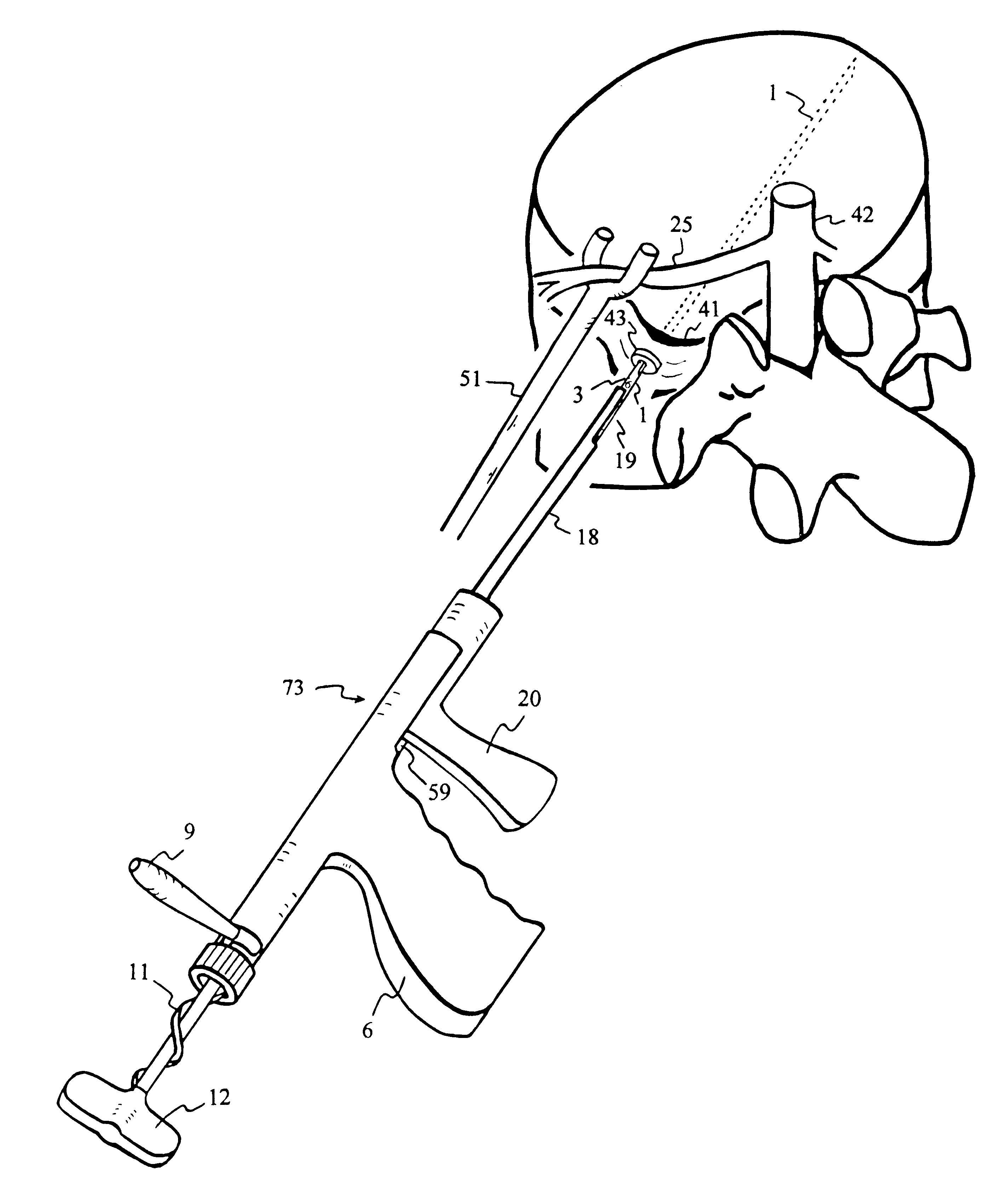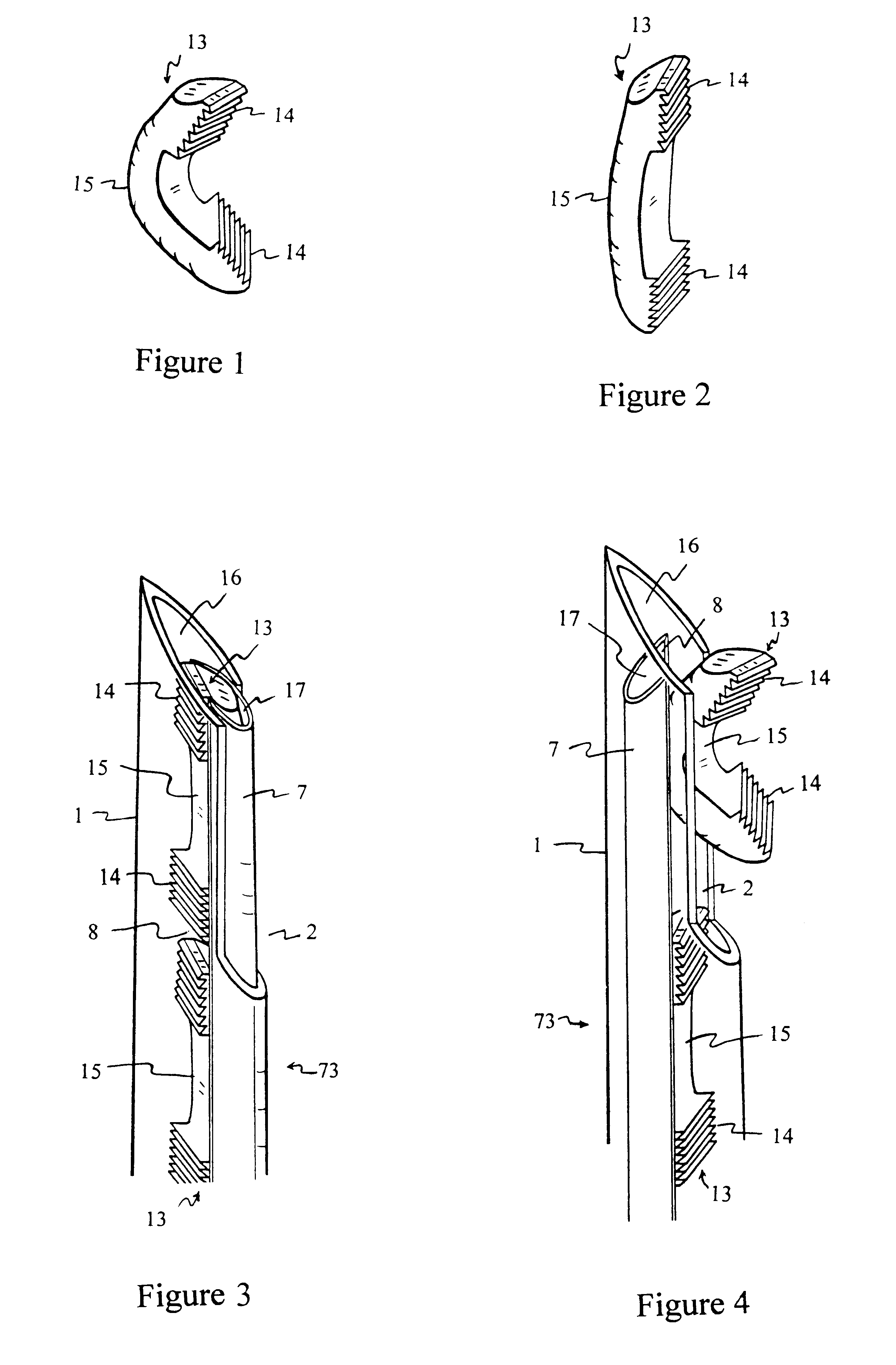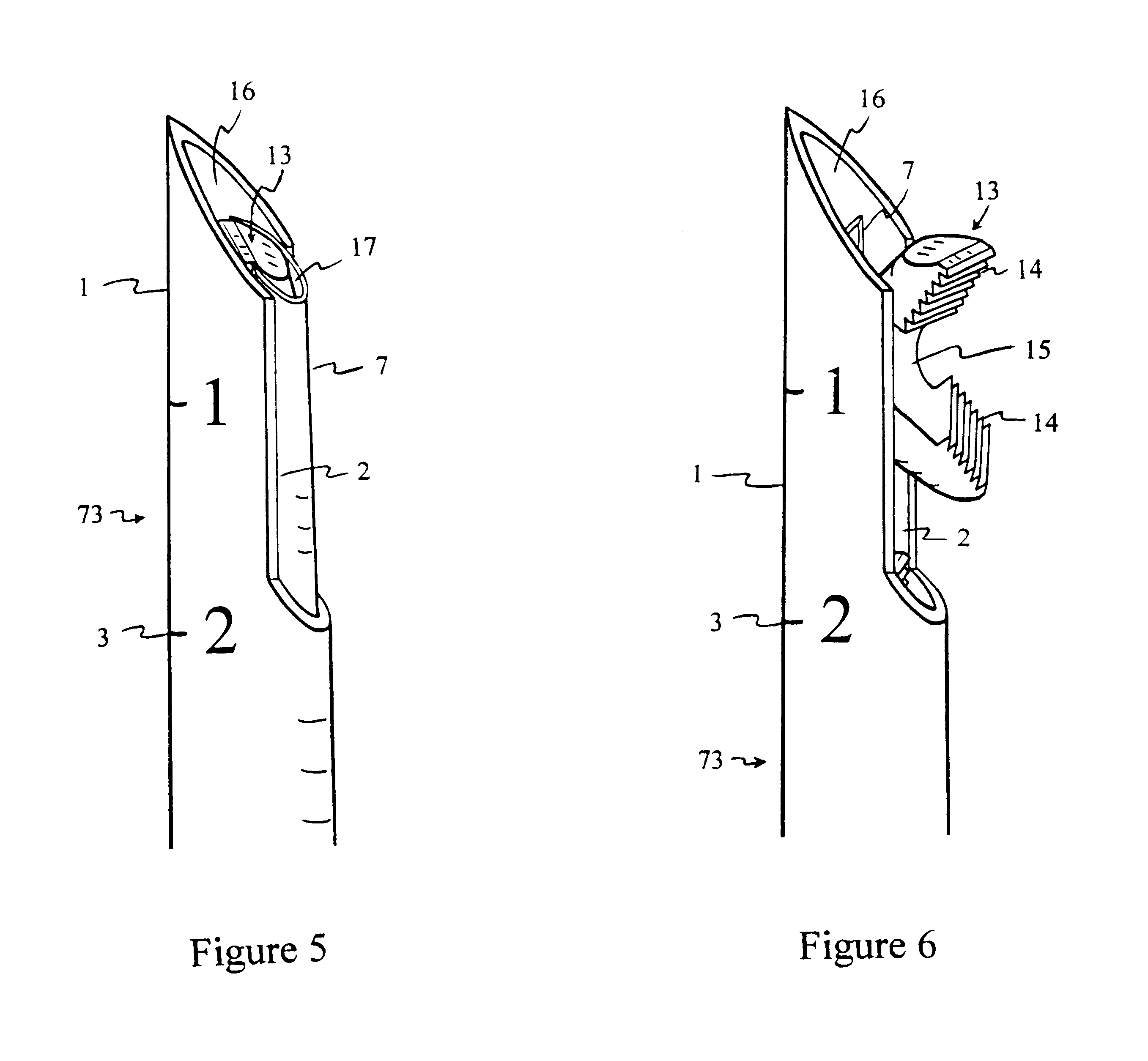Methods and devices for fastening bulging or herniated intervertebral discs
a technology of bulging or herniated discs and fasteners, which is applied in the direction of prosthesis, surgical staples, surgical forceps, etc., can solve the problems of reducing the holding strength of freshly inserted devices, loosing grip, and few, if any, of these staples and fasteners
- Summary
- Abstract
- Description
- Claims
- Application Information
AI Technical Summary
Benefits of technology
Problems solved by technology
Method used
Image
Examples
Embodiment Construction
In preparation for use, the fastener delivery device is set in the out-of-phase mode with a fastener in the deploy position. The tissue needing to be fastened is chosen, prepared and arranged. The device is then guided to the proper depth and orientation by the penetration markers, orientation line(s), endoscope, X-ray, ultrasound, MRI and / or other technique.
(A) Meniscal Repair
Guided by an arthroscope and the penetration markers, the device punctures the meniscal body and traverses the tear. Through the indented slit of the needle, the distal half of the fastener with gripping element is deployed. The torn portion is gently pulled in and manipulated back to the main body of the meniscus, then the fastener is fully deployed by setting the cartridge fully in-phase to close the tear. The device is now ready to be withdrawn, or another fastener may be deployed through the same puncture site in a different direction to ensure a tight closure.
To deploy another fastener, the cartridge is r...
PUM
 Login to View More
Login to View More Abstract
Description
Claims
Application Information
 Login to View More
Login to View More - R&D
- Intellectual Property
- Life Sciences
- Materials
- Tech Scout
- Unparalleled Data Quality
- Higher Quality Content
- 60% Fewer Hallucinations
Browse by: Latest US Patents, China's latest patents, Technical Efficacy Thesaurus, Application Domain, Technology Topic, Popular Technical Reports.
© 2025 PatSnap. All rights reserved.Legal|Privacy policy|Modern Slavery Act Transparency Statement|Sitemap|About US| Contact US: help@patsnap.com



